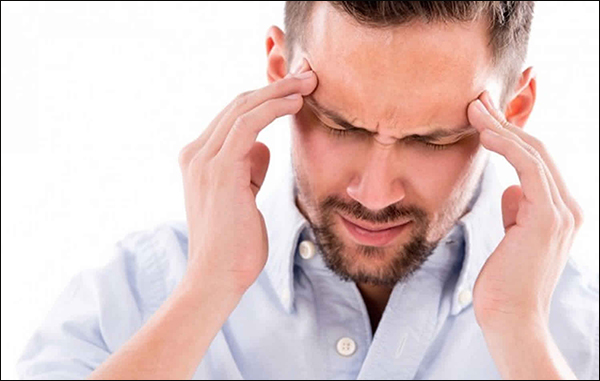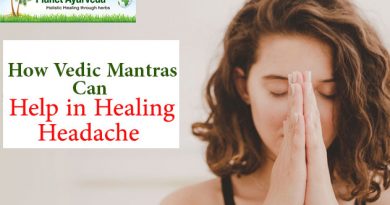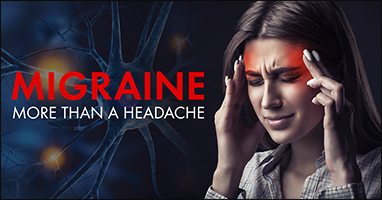Alternative Medicines for Trigeminal Autonomic Cephalgias (Tac)
Abstract
Trigeminal autonomic cephalgias (TAC)- are a group of primary types of headaches which includes unilateral pain and autonomic symptoms (related to autonomic system of the brain) for a short duration of time. So if any of you are facing any sort of headache like this, you must read this article carefully and completely confirm whether you are suffering from this condition or not. TACs are three in number that are cluster headache, paroxysmal hemicrania, hemicrania continua and SUNCT (short-lasting unilateral neuralgiform headache attacks with conjunctival injection and tearing). As per ayurveda it is correlated to anantvata-one of the type of shiroroga. In this article we are going to discuss the cause, symptoms and ayurvedic treatment of trigeminal autonomic cephalalgias. Also we are going to mention miraculous herbal formulations by planet ayurveda to cure trigeminal autonomic cephalgias. So if someone is confirmed with this condition just wisely choose the herbal formulations by planet ayurveda.
Introduction
Trigeminal autonomic cephalgias is a condition that comes under the primary type of headaches. It includes three types of headaches which are cluster headache, paroxysmal hemicrania, hemicrania continua and SUNCT (short-lasting unilateral neuralgiform headache attacks with conjunctival injection and tearing). Cluster headache is a unilateral type of headache that is associated along with ipsilateral autonomic symptoms (all the symptoms occur in the same side). Next one is paroxysmal hemicrania, this condition associated with a period of headache that usually persists for the period of 5 to 30 minutes. It causes sudden and repeated headaches.
The third one named as hemicrania continua occurs due to indomethacin response (a drug used for analgesic effect and anti-inflammatory effect) and is characterized with continuous unilateral pain which is associated with autonomic features and causes persistent headache that never goes or sometimes rarely goes. Now coming to the SUNCT that is short unilateral neuralgiform headache which is related with conjunctival injection and tearing. As per ayurveda it is correlated to Anantvata, a type of shirogata roga. In anantvata there is a vitiation of tridosha and that vitiates the sternomastoid region which in turn causes excessive pain in the neck region. If someone is suffering from the same, you must read this article and get the solution to your health concern. Ayurvedic treatment is best in curing your condition so must choose this treatment option to get rid of your condition. Also we are going to help you by herbal remedies from planet ayurveda that are selectively and effectively made to cure this condition.

Classification of trigeminal autonomic cephalgias
1. Cluster Headache
luster headache occurs in cluster periods or cyclic patterns. This type of headache is the most painful type of headache. This headache generally awakens a person in the middle of night along with excessive pain around the eye of one side and the same half side of the head. During the time of cluster period headache occurs each day once or several times a day, one single attack of cluster headache may last for 15 minutes to 3 hours and occur at the same time everyday. Mostly the attacks may occur at night time most probably after 1 to 2 hours after going to bed.
2. Paroxysmal Hemicrania
It is a rare type of headache that generally begins in adulthood. One may experience severe throbbing, boring and claw-like pain on one side of the face along with in, around and behind the eye of the affected side. Also occasionally it may reach the back of the neck. Attacks in this type of headache usually occur for 5 to 40 times a day and it may last for 2 to 30 minutes. Paroxysmal hemicrania is of two types that are chronic- in which one may experience it on a daily basis for a time period of year or more and the other one is episodic which is associated with the headache that may exist for several months or years
3. Hemicrania continua
The name hemicrania continua refers to hemicrania which means one side of the head and continua means that remains for continuous time. People generally confuse this type of headache with migraine but it’s totally different from that. The symptoms in hemicrania continua persists continuously but in migraine the symptoms usually come and go and it can affect any side of your face and head unlike in hemicrania continua in which only one side is affected. Migraine symptoms come and go.
4. SUNCT
It is broadly known as short unilateral neuralgiform headache which is related with conjunctival injection and tearing. It is a syndrome not a disease. This syndrome is common in men and around the age of 50 it’s more common. The attacks in SUNCT are unilateral and the pain includes the ocular or periocular area. The intensity of attacks vary from moderate to severe and the character of pain is burning, electrical and stabbing. The duration remains from 10 to 120 seconds. The intraocular pressure is used to increase on the side which is affected along with conjunctival injection and tearing (flow of tears).
Causes of trigeminal autonomic cephalgias
As such there is not any specific cause of trigeminal cephalgias but here are some risk factors that may cause trigeminal cephalgias. These risk factors affect the trigeminal nerve and cause specific symptoms. Let’s take a view on those risk factors.
- Family history
- Old age
- Disorders of neck, head, nose
- Poor diet
- Stress
- Sleep disturbances
- Excessive Alcohol intake
- Hormonal changes
- Certain medications
- Environmental factors
Common Signs of trigeminal autonomic cephalgias
Trigeminal autonomic cephalgias include unilateral headache along with below signs that are also present unilaterally
- Lacrimation : Flow of tears
- Conjunctival injection: Enlargement in conjunctival vessels
- Nasal congestion: obstruction in nasal passage due to swelling
- Rhinorrhea: Excessive clear fluid drainage from the nose
- Flushing: Face become red in color
- Ptosis: Drooping of upper eyelid
Herbal treatment for Trigeminal Autonomic cephalgias by Planet Ayurveda
Planet Ayurveda provides a list of herbal remedies for curing all types of trigeminal cephalgias. All the herbal remedies are specifically listed for the treatment of TACs and these medications are made under the guidance of M.D ayurveda practitioners. All these formulations are free from any type of added preservatives and synthetic materials like gums, resins, fibers, color, etc. As this condition is related to anatvata that is one of the shiroroga and pain is the specific symptom that is due to tridosha vitiation, so the treatment option is also considered accordingly. Planet ayurveda listed 4 herbal formulations for the treatment of the same lets take a detailed view on these symptoms.
- NEUROGENIE CAPSULES
- NEURO PLAN SYRUP
- VRIHAT VATCHINTAMANI RAS
- BOSWELLIA CURCUMIN CAPSULES

PRODUCT DESCRIPTION
1. NEUROGENIE CAPSULES
This herbal remedy includes two herbal standardised extracts that are brahmi (Bacopa monnieri) and ashwagandha (Withania somnifera). They are considered as neurotonic herbs. Both these herbs prevent the risk factors to trigger trigeminal autonomic cephalgias. So the risk factors like stress, and depression can be reduced with both the ingredients of neurogenie capsules. Also neurogenie capsules help in alleviating vitiated vata which is the main cause of TACs.
Dosage: 2 Capsules twice daily with plain water taken to be after meals.
2. NEURO PLAN SYRUP
This syrup is made up of several ingredients such as Brahmi (Bacopa monnieri), mandukaparni (Centella asiatica), shankhpushpi (Convolvulus prostratus), ashwagandha (Withania somnifera) , jyotishmati (Cardiospermum halicacabum), marich (Piper nigrum), pipli (Piper longum) and some other herbs. Mandukparni (Centella asiatica) and shankhpushpi (Convolvulus prostratus) are 2 among the 4 medhya rasayanas. Medhya rasayanas can strengthen the nervous system and improve the functioning of the brain.
Brahmi (Bacopa monnieri) and ashwagandha (Withania somnifera) promotes neuronal health which in turn helps in preventing trigeminal nerves to be triggered and cause trigeminal autonomic cephalgia pain. Here are some other herbs in neuro plan syrup which along with these herbs maintains proper health of nervous system functioning and lowers the risk of occurring suh conditions in the nervous system
Dosage: 2 teaspoons twice daily with plain water after meals.
3. VRIHAT VATCHINTAMANI RAS
This is the classical formulation which contains number of herbs such as Swarna Bhasma (Calx of Gold), Abhrak Bhasma (Calx of Mica), Rajata Bhasma (Calx of Silver), Loha Bhasma (Calx of Iron), Praval Bhasma (Calx of Coral), Mukta Bhamsa (Calx of Pearl), Rasa Sindoora (Red sulfide of Mercury), Aloe vera juice (Aloe barbadensis) and some other ingredients. As we know that vata aggravation is the main cause of pain so it is necessary to alleviate the vitiated vata dosha. Vrihat vatchintamani ras includes all the ingredients that are meant to balance the vata dosha. As the vata is balanced it will not promote the triggering trigeminal nerve and hence helps in curing trigeminal autonomic cephalgias.
Dosage: 1 tablet twice a day with plain water after meals.
4. BOSWELLIA CURCUMIN CAPSULES
These capsules are made up of standardised extracts of two herbs that are boswellia (Boswellia serrata) and curcumin (Curcuma longa). Both these extracts are great analgesics (reduce pain) and anti-inflammatory (reduce inflammation). Sp to reduce pain and inflammation of the trigeminal nerve this herbal remedy supports a lot. So adding these capsules into your TACs recovery will keep you away from the pain that you’re suffering from.
Dosage: 1 capsule twice daily after meals with plain water.
Conclusion
Trigeminal autonomic cephalgias (TAC)- are a group of primary types of headaches which includes unilateral pain and autonomic symptoms (related to autonomic system of the brain) for a short duration of time. It includes disorders such as cluster headache, paroxysmal hemicrania, hemicrania continua and SUNCT. Its causes include Family history, Old age, Disorders of neck, head, nose, Poor diet, Stress, Sleep disturbances, Excessive Alcohol intake and some others. And the common signs in TACs are Lacrimation, Conjunctival injection, Nasal congestion, Rhinorrhea, Flushing and ptosis.
All these conditions are faced along with unilateral pain in the head and around the eye. As per ayurveda this condition is related to anatvata that is one of the shiroroga and pain is the specific symptom that is due to tridosha vitiation. So in this article we explained all these things and also the ayurvedic treatment for curing this. Along with that we also explained how herbal remedies by planet ayurveda work in managing TACs without any side effects. If you have any other queries you may contact us on www.planetayurveda.com.






